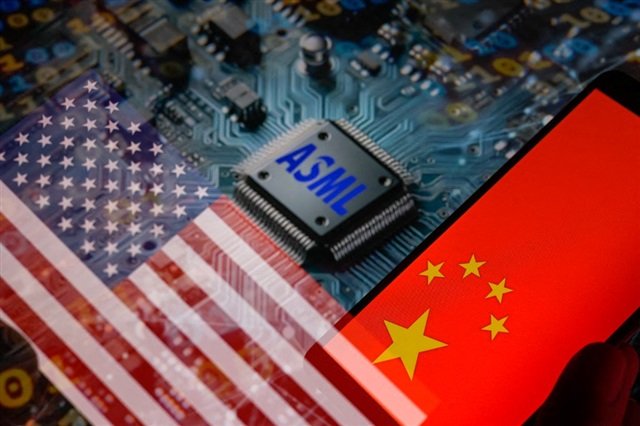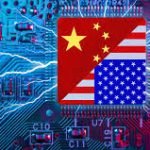
Red Lines and Silicon Fences: Unpacking the U.S.-China AI Chip Showdown
The U.S.-China tech rivalry just ramped up, with sweeping AI chip restrictions creating ripples around the globe. From fragile diplomacy to fears of stifled innovation, the consequences extend far beyond trade talks—shaping the very ecosystem of tomorrow’s technology.
Latest escalation in the U.S.-China technology standoff, focusing on AI chip restrictions, diplomatic fallout, and what it all means for the future of global innovation and competition. We’ll blend sharp analysis with a realistic look at how these moves influence markets, politics, and everyday tech users.
The world of tech rarely has a dull moment, but last week’s news hit different. Picture this: You’re prepping for a regular Monday, content with a strong espresso, when a notification flashes—Washington has just thrown gasoline onto the AI chip squabble with Beijing. Forget the usual diplomatic wrangling; this move, targeting not just a company but the entire idea of technological sovereignty, is the sort of plot twist that forces you to double-check you haven’t misread the headline. If it feels like the rules of international trade are changing faster than a phone on turbo charge, you’re not alone.
Wires Crossed: How a Simple Statement Lit a Fuse
Unexpected Sparks After Geneva
Just days after high-level trade talks in Geneva, the global tech world was jolted. The U.S. Commerce Department issued a warning that landed like a thunderclap. Their message? Using Huawei’s Ascend AI chips anywhere in the world could actually violate American export controls.
The United States government dropped a new bombshell. It said that using Huway’s AI chips anywhere in the world could actually violate American export controls.
That’s not just a technicality. It’s a red flag waved in front of every company, university, or government even thinking about these chips. The phrase “anywhere in the world” wasn’t just a detail—it was the fuse.
What Did the U.S. Actually Say?
- May 13: The U.S. Commerce Department issues new guidance focused on Huawei’s Ascend AI chips.
- The original statement: Using those chips anywhere in the world might actually breach U.S. export rules—even if no American company was directly involved.
- That means: If a company in Europe, Africa, or Asia uses these chips, they could still be in trouble with U.S. law.
It’s a sweeping move. Some call it economic coercion. Others see it as a warning shot in the ongoing tech war. Either way, the message is clear: The U.S. wants to draw a line, and it’s not just on its own soil.
China’s Reaction: Frustration Boils Over
China didn’t take this lightly. In fact, they were visibly frustrated. After what seemed like progress in Geneva, this new guidance felt like a slap in the face. The Chinese Commerce Ministry fired back with a strongly worded statement, condemning the U.S. actions.
- May 19: China’s official response lands, sharp and unmistakable.
- They accuse the U.S. of breaking faith after recent talks.
- Diplomatic tensions, already high, get another jolt.
It’s not just about chips. It’s about trust—or the lack of it. One moment, both sides are talking trade. The next, a single sentence from Washington lights up a global debate.
Why Did This Statement Matter So Much?
- Global Reach: The idea that U.S. rules could apply “anywhere in the world” is a big deal. It’s not just about American companies anymore.
- Uncertainty: The guidance was later softened, but the damage was done. Companies everywhere started asking: Are we at risk?
- Diplomatic Fallout: China’s angry response shows how quickly progress can unravel.
It’s a bit like someone moving the goalposts in the middle of a game. Suddenly, everyone’s unsure of the rules. Who’s in charge? Who decides what’s allowed?
Lingering Questions
The world is left wondering. Will other countries push back against these sweeping U.S. controls? Or will they quietly comply, worried about getting caught in the crossfire? For now, the only certainty is uncertainty.
One thing’s clear: A simple statement, just a few words, can light a fuse that burns across continents.
Beyond Blacklists: Coercion, Competition, and the Global Tech Chessboard
From Sanctions to Systemic Pressure
The U.S. has long used sanctions as a tool to shape global tech markets. But lately, critics say the approach has shifted. It’s not just about blocking a company or two. Now, the focus is on influencing entire tech ecosystems—and, by extension, the sovereignty of foreign states.
Some call it economic coercion. Others, more bluntly, call it “bullying.” The line between regulatory oversight and outright pressure is getting blurry. The message from Washington is clear: certain players, like China’s leading chipmakers, are seen as obstacles—maybe even threats—to U.S. national security. The stakes? Advanced AI chips, the backbone of next-gen artificial intelligence.
Ripple Effects: The Global Response
The new restrictions don’t just target one company. They ripple outwards, sending a message to every major economy: siding with one superpower could mean risk or retaliation.
- Europe: Grappling with questions of “economic sovereignty.” Can it maintain independence, or will it be forced to pick a side?
- India and Southeast Asia: Watching closely. Will they toe the U.S. line, or chart their own course?
The global consensus is fragile. If market competition is stifled, innovation could suffer. Some leaders warn that weaponizing technology sets a dangerous precedent. Once the door is open, it’s hard to close.
Changing the Rules—But Not the Message
Earlier U.S. sanctions hit 5G tech and smartphones. Now, the policy tone has softened—at least on paper. The phrase “anywhere in the world” was quietly removed from official guidance. Instead, the language now says chips “risk violating export rules,” not that they automatically do.
But critics argue the message hasn’t changed. The warning still stands. As one observer put it, “the adjustment in tone wasn’t really enough to cool things down.” The effect lingers, even if the words are different.
Debate at Home and Abroad
Inside the U.S., there’s debate over the best approach. Should the government double down on domestic investment—building up its own chip industry? Or keep pressing foreign rivals? Some say focusing on homegrown innovation would be more productive than “defaulting to bullying other nations.”
Meanwhile, China’s response has been swift and sharp. After the latest U.S. guidance, Beijing accused Washington of undermining progress from recent trade talks. In a strongly worded statement, China’s commerce ministry said the new rules “violate consensus” reached just days earlier. Their demand: the U.S. should “correct its mistake.”
Protectionism could be a useful tool, but perhaps you seem to be going too far with it, and we are ready to respond accordingly.
So far, neither the U.S. Commerce Department nor the White House has responded directly to China’s concerns. The ball, it seems, is in Washington’s court.
Unanswered Questions
- What happens if the U.S. limits access to AI chips long-term? The impact on global research and development is still unknown.
- Will other countries accept the new rules, or push back?
- Is the world heading toward a fractured tech landscape, with rival ecosystems and standards?
One thing is certain: the chessboard is set, and every move is being watched.
China’s Next Move: Escalation, Innovation, or Something Unseen?
Unpredictable Paths Ahead
The world is watching. After the latest U.S. restrictions on AI chips, China’s next move is anything but certain. Some say Beijing will double down on homegrown chip development, pouring more subsidies into local manufacturers. Others whisper about possible retaliation against U.S. firms operating in China—a move that could shake global business confidence.
China’s official stance? The new U.S. measures are “discriminatory.” Officials vow to keep objecting, even as the language in Washington’s guidance shifts. The response from Beijing came within days of the U.S. policy shift. No formal U.S. government reply to China’s latest objections has surfaced—at least, not yet.
Diplomacy on a Knife’s Edge
Every round of U.S.-China talks now has a new shadow: the tech war. AI chips are no longer just about business or innovation. They’re about economic power. National security. Maybe even pride.
In the aftermath, China could raise this issue in every diplomatic forum. They might leverage local industry support, or use the controversy to claim U.S. bad faith. It’s a familiar playbook, but the stakes feel higher this time.
Retaliation or Reinvention?
What happens if China decides to hit back? Retaliation against U.S. firms in China is still on the table. That could mean new hurdles for American companies, or even outright bans. The ripple effects would be global. Investors, supply chains, and tech talent could all feel the shock.
But there’s another path. China might channel its energy into innovation. More funding for domestic chipmakers. New research centers. A push to close the technology gap, fast. Some experts wonder if this rivalry will drain resources—or spark a new era of invention.
The Wildcard: A Divided Tech World?
Here’s a thought. What if the world splits into digital blocs? Imagine an “AI iron curtain,” with separate standards, networks, and even talent pools. Where would the best minds go? Would capital and creativity flow freely, or get stuck behind new walls?
Every chip, every line of code, every regulation is now a weapon in a much larger global struggle.
That’s the reality. Each side sees technology as both shield and sword. The lines are drawn, but the future is still blurry.
Conclusion: Waiting for the Next Move
For now, China’s response is swift but measured. They object, they plan, they prepare. The U.S. insists it won’t let China access cutting-edge AI tech. The world holds its breath, waiting for the next escalation—or maybe, a surprise twist. Will this rivalry drain both sides, or light a fire under global innovation? No one knows for sure. But one thing is clear: the AI chip showdown is far from over, and the next chapter could change everything.
TL;DR: The U.S.-China tech rivalry just ramped up, with sweeping AI chip restrictions creating ripples around the globe. From fragile diplomacy to fears of stifled innovation, the consequences extend far beyond trade talks—shaping the very ecosystem of tomorrow’s technology.
USChinaChipRestrictions, AIChipSanctions, USCommerceDepartmentGuidance, GlobalTechnologyRace, HuaweiAscendAIChips, AITechWar, USExportControls, EconomicSovereignty, ChinaTradeConflict, AIChipBanImpact,AIchiprestrictions, U.S.-Chin techwar, Huaweisanctions, digitalsovereignty, semiconductordiplomacy, exportcontrols, globaltechrivalry, economiccoercion, chipwar, innovationrace
#AITechWar, #EconomicSovereignty, #AIChipBanImpact, #USExportControls, #USChinaChipRestrictions, #USCommerceDepartmentGuidance, #AIChipSanctions, #HuaweiAscendAIChips, #ChinaTradeConflict, #GlobalTechnologyRace,#uschinatechwar, #aichips, #digitalsuperpower, #economiccoercion, #techsovereignty, #semiconductors, #huawei, #geopolitics, #exportcontrols, #innovationdiplomacy

